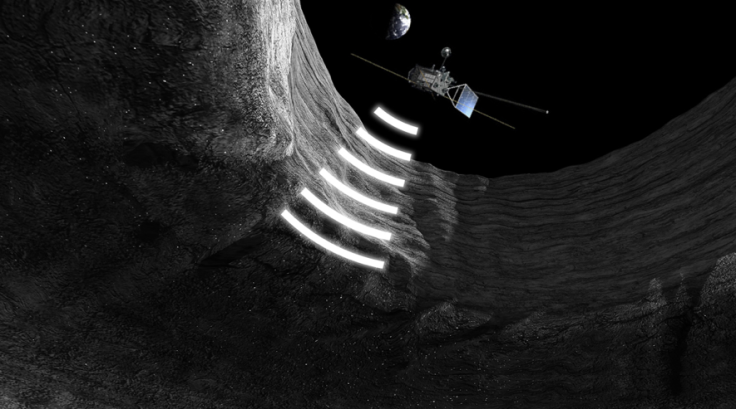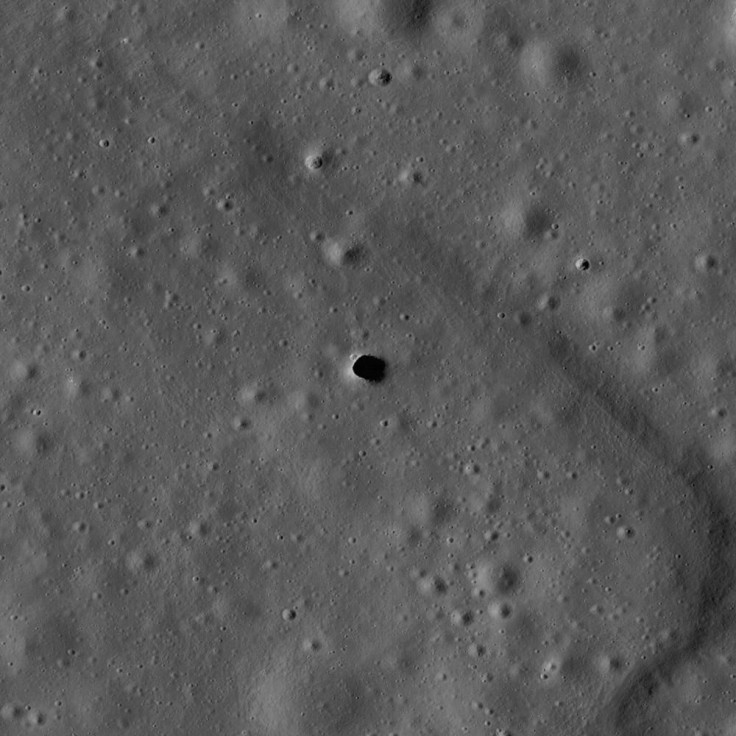Moon Caves Could Be A Lunar Base, Science Target For Astronauts

Earth’s moon might have caves that future astronauts could use to build a lunar base, according to data from an orbiting spacecraft.
The Japan Aerospace Exploration Agency reported that its orbiter Kayuga found evidence of the underground caves, which it detected using radar. The caves, also called lava tubes because the flow of lava created the subsurface chambers, may be quite large. In addition to offering shelter to people living on the moon, the lava cave tubes could be a scientific treasure trove.
According to a study in the journal Geophysical Research Letters, Kayuga’s radar originally “found a distinctive echo pattern” that suggested the presence of a lava tube at one particular location in the volcanic area called Marius Hills, so the scientists expanded their search. They found more locations with these echo patterns.
“Speculation about the presence of lava tube caves on the moon has been around since the Apollo era,” a note from the editor on the journal site says. “Dreams of putting people into lava tubes on the moon have been ongoing for decades, and this work is an important step in turning that dream into reality.”
The findings come years after imaging data from Kayuga and NASA’s Lunar Reconnaissance Orbiter revealed “deep vertical holes” in a few areas of the lunar surface, including Marius Hills.

“The three biggest holes on the moon are possible skylights opening into an ample space,” JAXA said, referring to information that suggests the caves extend several feet to either side of the holes’ openings.
According to the space agency, these caves have value both as shelters and as scientific hotspots.
“They might be the best candidate sites for future lunar bases, because of their stable thermal conditions and potential to protect people and instruments from micrometeorites and cosmic ray radiation,” JAXA said. “The same stable and protected environment that would benefit future human explorers also makes them an enticing science target: original lava compositions, textures, and even magmatic volatiles are expected to be preserved in pristine condition within these lava tubes.”
Because those samples will not have been degraded from exposure on the surface, they could be a window into the moon’s past and teach us about how Earth’s satellite evolved.
Additionally, JAXA said, the lunar lava tubes may prepare scientists for exploring Mars: They are “analog environments that can provide insights into Martian subsurface lava tubes, where Martian life might have emerged and perhaps might even survive to this day.”
The idea of astronauts exploring and setting up camp in a lava tube could not be that far off. While the U.S. is the only country to send humans to the moon — 12, to be exact — it is currently working on projects that could make a new generation of moonwalkers. NASA and Russian space agency Roscosmos agreed a few weeks ago to collaborate on building a moon base and pushing human space exploration forward. They specifically mentioned a concept called the “deep space gateway” in which a manned spacecraft orbiting the moon would be used to launch spacecraft both to the lunar surface and to places farther away.
When JAXA announced its goal of making a moon landing by 2030 earlier this year, the organization suggested it would help build a space station around the moon and then use that orbiter to get someone to the surface.
These are not the only nations looking to get to the moon. China has been running simulations of lunar colonies to prepare its space agency for sending astronauts up there, similar to isolation experiments in the U.S. that aim to simulate life on Mars for a small group of explorers.
© Copyright IBTimes 2024. All rights reserved.





















